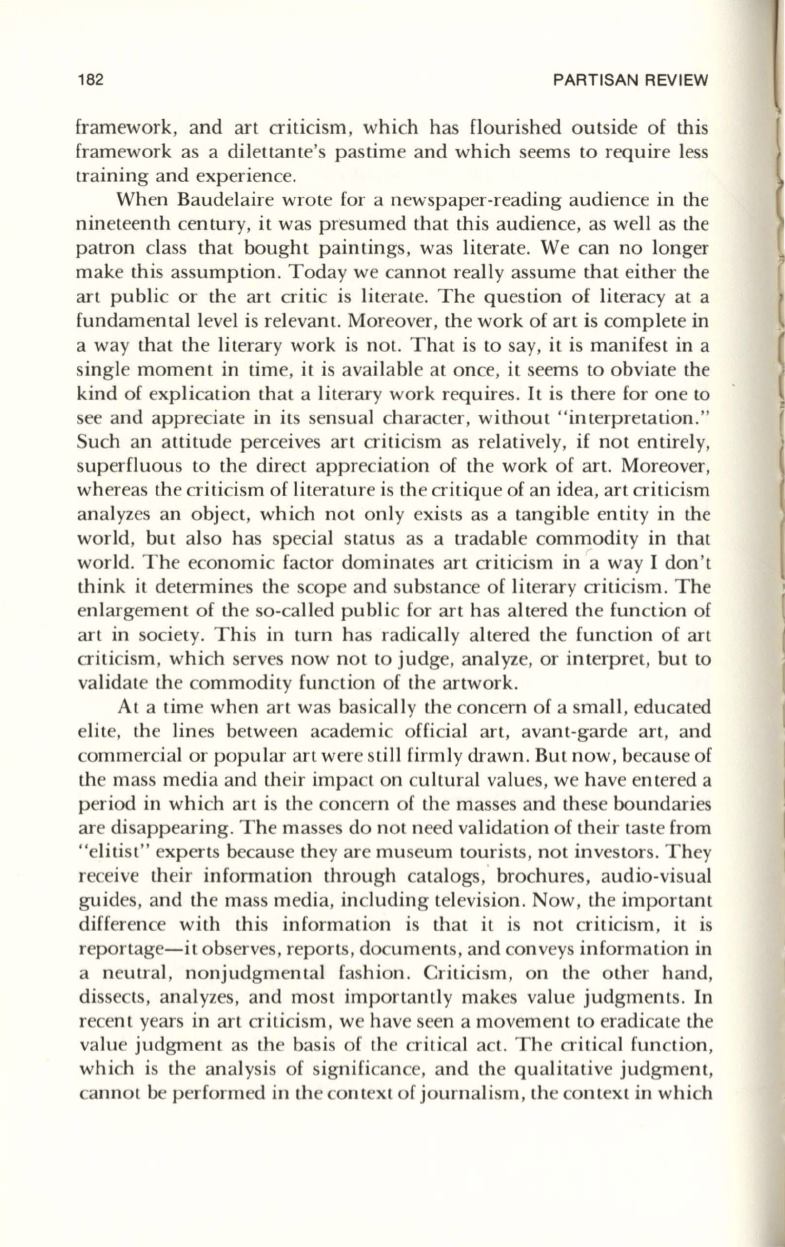
182
PARTISAN REVIEW
framework, and art cntlClSm, which has flourished outside of this
framework as a dilettante's pastime and which seems to require less
training and experience.
When Baudelaire wrote for a newspaper-reading audience in the
nineteenth century, it was presumed that this audience, as well as the
patron class that bought paintings, was literate. We can no longer
make this assumption. Today we cannot really assume that either the
art public or the art critic is literate. The question of literacy at a
fundamental level is relevant. Moreover, the work of art is complete in
a way that the literary work is not. That is to say, it is manifest in a
single moment in time, it is available at once, it seems to obviate the
kind of explication that a literary work requires. It is there for one to
see and appreciate in its sensual character, without "interpretation."
Such an attitude perceives art criticism as relatively, if not entirely,
superfluous to the direct appreciation of the work of art. Moreover,
whereas the criticism of literature is the critique of an idea, art criticism
analyzes an object, which not only exists as a tangible entity in the
world, but also has special status as a tradable commodity in that
world. The economic factor dominates art criticism in a way I don't
think it determines the scope and substance of literary criticism. The
enlargement of the so-called public for art has altered the function of
art in society. This in turn has radically altered the function of art
criticism, which serves now not to judge, analyze, or interpret, but to
validate the commodity function of the artwork.
At a time when art was basically the concern of a small, educated
elite, the lines between academic official art, avant-garde art, and
commercial or popular art were still firmly drawn. But now, because of
the mass media and their impact on cultural values, we have entered a
period in which art is the concern of the masses and these boundaries
are disappearing. The masses do not need validation of their taste from
"elitist" experts because they are museum tourists, not investors. They
receive their information through catalogs,' brochures, audio-visual
guides, and the mass media, including television. Now, the important
difference with this information is that it is not criticism, it is
reportage-it observes, reports, documents, and conveys information in
a neutral , nonj udgmen tal fashion. Criticism, on the other hand,
dissects, analyzes, and most importantly makes value judgments. In
recent years in art criticism, we have seen a movement to eradicate the
value judgment as the basis of the critical act. The critical function,
which is the analysis of significance, and the qualitative judgment,
cannot be performed in the context of journalism, the context in which


